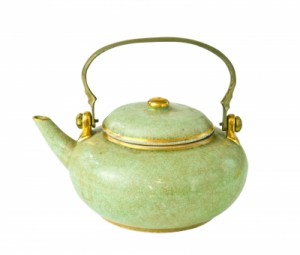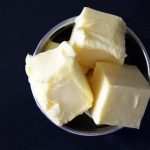Matcha powder is one of those intriguing Japanese ingredients which to Western eyes could soon catch on as an ingredient in culinary circles. Wasabi which we know about when we purchase sushi, with its pea green colour is being ‘matchad’ by a product which is actually an even stronger emerald green. It does have interesting product development properties.

Matcha is produced when green tea leaves (Gyokuro – the fine green tea) are finely milled. For centuries, the Japanese have consumed what is called a ‘ceremonial’ tea – matcha in the famous Japanese tea ceremony. Here matcha was specially prepared, served and drunk according to strict protocols. The tea bushes normally producing Gyokuro are specially shaded from the sum for at least 3 weeks before they are harvested because it produces chemicals, probably amino-acids which help sweeten the tea. There is likely to be a reduction in the catechin content too. Further processing requires picked leaves to be steamed and dried. The leaves are traditionally ground with granite stone mills.
If the research behind green tea is anything to go by, then it should also have excellent health benefits, improved somewhat by the fine milling.
The key nutritional components in matcha are L-theanine, catechins and caffeine. The catechins are potent polyphenolics with deodorant, fat burning, antimicrobial, and antioxidant properties. Water and methanol extracts of matcha were analysed using micellar electrokinetic chromatography. The researchers found in the water extractions that the concentration of epigallocatechin gallate (EGCG) was 137 times more than that found in China Green Tips green tea and over three times higher than the largest literature value for other reported green teas – interesting ! (Weiss and Anderton, 2003).

For the product developer, matcha is now a valuable ingredient providing a vivid green colour with a mild, grassy, earthy flavour. It does not have the astringency associated with other green tea extracts because the catechin content is lowered by the way in which the tea bush is shaded. Shading the leaf also helps produce a thin leaf with the intense green colour.
The matcha is now used to colour a variety of products such as green tea ice found in sushi bars. It would also be valuable in colouring dairy products, yoghurt, pasta, beverages (alcoholic and non-alcoholic) and bars. The powder could be a valuable coating on products. It may have value in energy bars if the caffeine content is high enough.
The ingredient is supplied by AOI Tea Co., Huntingdon Beach, Calif. and Taiyo International Inc. Taiyo have also researched the health benefits extensively – they have a nutritional ingredient brand called Sunphenon™ which is based on green tea catechins. AOI for example offer blends with other ingredients offering health benefits: Matcha and Gymnema, Matcha with Chlorella and Matcha with Collagen. Sweet Matcha which is also offered, blended with sugar, is used in smoothies, bakery products and iced teas.
Weiss, D.J., Anderton, C.R. (2011) Determination of catechins in matcha green tea by micellar electrokinetic chromatography. J. Chromatogr. A 1011, (1-2) pp. 173-180

Leave a Reply